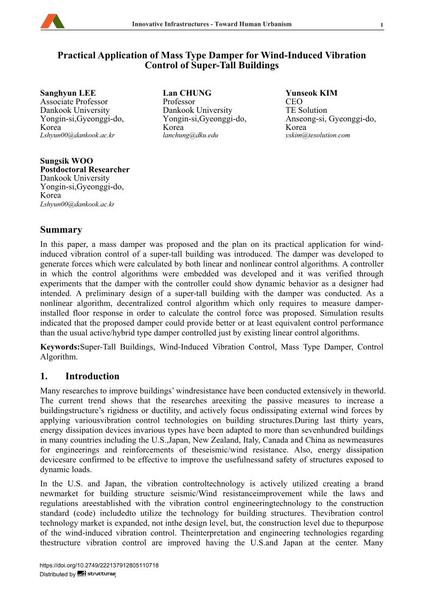Practical Application of Mass Type Damper for Wind-Induced Vibration Control of Super-Tall Buildings

|
|
|||||||||||
Bibliographic Details
| Author(s): |
SangHyun Lee
Lan Chung Yunseok Kim Sungsik Woo |
||||
|---|---|---|---|---|---|
| Medium: | conference paper | ||||
| Language(s): | English | ||||
| Conference: | 18th IABSE Congress: Innovative Infrastructures – Towards Human Urbanism, Seoul, Korea, 19-21 September 2012 | ||||
| Published in: | IABSE Congress Seoul 2012 | ||||
|
|||||
| Page(s): | 446-451 | ||||
| Total no. of pages: | 6 | ||||
| DOI: | 10.2749/222137912805110718 | ||||
| Abstract: |
In this paper, a mass damper was proposed and the plan on its practical application for wind- induced vibration control of a super-tall building was introduced. The damper was developed to generate forces which were calculated by both linear and nonlinear control algorithms. A controller in which the control algorithms were embedded was developed and it was verified through experiments that the damper with the controller could show dynamic behavior as a designer had intended. A preliminary design of a super-tall building with the damper was conducted. As a nonlinear algorithm, decentralized control algorithm which only requires to measure damper- installed floor response in order to calculate the control force was proposed. Simulation results indicated that the proposed damper could provide better or at least equivalent control performance than the usual active/hybrid type damper controlled just by existing linear control algorithms. |
||||
| Keywords: |
Wind-Induced Vibration Control Mass Type Damper Control Algorithm
|
||||
